
He was, without doubt, one of the most dominant and iconic personalities in the history of the Indianapolis Motor Speedway.
An innovator, tireless promoter and public relations genius, the flamboyant, larger-than-life Andy Granatelli succumbed to congestive heart failure Sunday, December 29th, 2013 in a Santa Barbara, California, hospital. He was 90.
“Andy Granatelli – known appropriately as “Mister 500″ – understood better than anyone the spirit and challenge of the Indianapolis 500 and had a remarkable ability to combine innovative technologies with talented race car drivers to make his cars a threat to win at Indianapolis every year,” said J. Douglas Boles, Indianapolis Motor Speedway President. “Andy leaves a legacy of historic moments that will live forever in Indianapolis 500 lore including his famous turbine that dominated the 1967 Indianapolis 500, the Lotus 56 of 1968, and giving the great Mario Andretti a kiss on the cheek in victory lane after his 1969 win. Our thoughts and prayers are with Andy’s family, friends and legion of fans.”
Granatelli’s lifelong passion for motor racing was unquestioned. A car entrant in the “500” over a span of almost 30 years from 1946 until 1974–typically with multiple entries–there is no question that the combination of his very choice of equipment and his flair for publicity introduced the sport to thousands upon thousands of individuals who might not otherwise have paid any attention.
While twice the winning “500” entrant during his tenure as president of the STP Corporation (with Mario Andretti in 1969, and in collaboration with the Patrick Racing Team and Gordon Johncock in 1973), Granatelli is most likely best remembered for fielding the only gas turbine-powered cars ever to qualify for the “500,” and to an only slightly lesser degree for extending by several years the tenure of the ear-splitting and exceedingly crowd-pleasing V8 Novi racing cars.
And those STP decals! They were everywhere, distributed by the millions, even to the point of having been included in a hardly inexpensive advertisement in Hot Rod Magazine in which there was a small pocket containing a decal. The philosophy? One would instinctively peel off the back and stick it on something, the result being that they might show up on a kid’s bicycle in Des Moines, a motor scooter in Sweden or a smoke-belching truck in Afghanistan.
The images come flooding forth: Andy passionately kissing a mildly protesting Andretti on the cheek in Victory Lane in 1969; Andy strutting down the IMS pit lane in the mid-1960s in an outlandish white suit emblazoned with dozens of STP logos; Andy walking toward the TV camera, pitching STP while dressed in a light-colored rain coat; and Andy looking north to Turn 4 and rubbing his hands in anguish as Parnelli Jones glides silently into view after a transmission failure with the turbine while leading within three laps of the finish in 1967.
That “kiss on the cheek” for Andretti was not all that unique, it having been a standard Andy procedure for years, Jim Rathmann, Freddie Agabashian and others all being subjected to a similar exuberant gesture following successful qualification runs in the 1950s.

Born March 18, 1923 in Dallas but raised in Chicago, Granatelli already was a force by the mid-1940s with the opening of a thriving speed shop on Chicago’s north side in collaboration with his older brother Joe and younger brother Vince. Grancor (for Granatelli Corporation) equipment became legendary in the hot rod world, leading the brothers to seek further notoriety by entering a Grancor-sponsored car in the 1946 “500.”
Having obtained one of the 10 aesthetically pleasing but less-than-successful Ford V8 Miller entries built for the 1935 “500” by Harry Miller for Edsel Ford and team manager Preston Tucker, the Granatellis installed a Mercury V8 outfitted with a Grancor head, hung headlights and license plates on the car and then proceeded to drive it down from Chicago.
Driven by Danny Kladis, the car qualified for the 33rd position and was rolling along steadily when Kladis lost power in Turn 2 immediately following a pit stop on Lap 46. After the car was towed through the infield and back to the garage area, Andy realized that the fuel switch – turned off during the stop for safety reasons – had not been turned back on. When the car came out to the pit gate, engine running once again, officials would not allow it though, ruling that the car had “left the race course” and was therefore out.
The following year, Croatian-born immigrant Pete Romcevich ended up 12th in one of two Grancor entries, his run extended to 167 laps thanks to some quick thinking on the part of Andy Granatelli. The car had earlier run low on oil, the rule for many years being that none could be added once the race had started. But there was no rule against adding something else, and Andy’s claim was that he positioned himself in such a way that officials would be unable to see him to pour water into the lubricating system in order to successfully squeeze out a few more laps.
The Granatellis entered a mixed bag of four cars for the 1948 race, Andy attempting to qualify one himself. He was well on his way to accomplishing that goal when a tire blew, causing him to hit the wall on the final lap of a last-ditch attempt when his average speed for the first three laps had been good enough to “get in.” At the time of his passing, Granatelli remained the oldest living driver to have made a qualifying attempt, with his 1948 run being the earliest by any living driver.
In the meantime, the Granatellis had formed a sanctioning body for “hot rod track roadsters,” West Coast imports Pat Flaherty, brothers Dick and Jim Rathmann and others racing in the late 1940s and early 1950s with the Hurricane Hot Rod Association at Soldier Field, Rockford, Illinois, and other locations against numerous Chicago-area drivers who would later compete in AAA and USAC Stock Car events. Future “500” winners Flaherty and Jim Rathmann both took “rookie” tests in Granatelli-owned or sponsored cars, as did a forever grateful 1950 winner Johnnie Parsons in 1948.
Flaherty was “bumped” in 1949 with a Grancor-Ford (chief mechanic: A. J. Watson). But when Flaherty qualified a Granatelli-entered Kurtis/Offy in 1950, Andy, in typical fashion, managed to talk Hollywood legend Clark Gable into posing with the crew in the post-qualification photos. The team ended up 10th in the rain-shortened affair.
By far the best finishes during this period were second in 1952 with Jim Rathmann and fourth with Agabashian (Paul Russo in relief) in 1953.

Remembering Andy Granatelli (1923 – 2013) Continued
After failing to qualify due to a misunderstanding in 1954, Granatelli took a hiatus for several years and did not return as an entrant until 1961. During his early days at the track, he had been mesmerized by the front-drive Novis of Ralph Hepburn, Duke Nalon, Cliff Bergere, Chet Miller and Rex Mays, secretly wishing he could have driven one. In 1956, Novi owner Lew Welch switched to rear-drive cars but after not qualifying in 1959 and 1960 and then running into a personal reversal of fortune, he put the Novi team up for sale. Granatelli, then in California and associated with Paxton Products, purchased the entire package “for a song” and hurriedly entered one of the cars in the 1961 “500.”
For a couple of days, Granatelli’s Novi even loomed as a legitimate contender for the pole position with Dick Rathmann “test hopping” at faster than 148 mph. But Rathmann’s car owner would not release him from his contract. After a variety of others “took rides,” poor Ralph Liguori had the misfortune of having a spectacularly broken crankshaft end the campaign.
After failing to get either Chuck Stevenson or Bill Cheesbourg “in the show” in 1962, Granatelli achieved something in 1963 Lew Welch never had: qualify three Novis, the drivers on this occasion being Jim Hurtubise (who started second and led the first lap) and rookies Bobby Unser and Art Malone. Although three cars qualified again in 1964, and two in 1965, the only driver to see a checkered flag during these years was Malone, who completed 194 laps for 11th in 1964.
In 1966, there was a most unlikely teaming-up of the flamboyant Granatelli, now president of STP Corporation, and the defending “500” winners, Scotland’s gentleman farmer Jim Clark and principal of Lotus Cars, Ltd, the David Niven-like Colin Chapman. They finished second to Graham Hill with their florescent orange Lotus (a huge shock to the system of purists) and an “almost” third with teammate Al Unser, who was involved in an accident late in the race.
Hill joining Clark in similar livery for 1967 would seem to have been worthy of the main headlines, but that story was completely overshadowed by another STP entry, Parnelli Jones in a revolutionary four-wheel-drive vehicle powered by a Pratt & Whitney ST6 gas turbine engine intended for helicopters. It started sixth, led the first lap by a considerable margin and then proceeded to lead 171 of the first 196 laps, forced out with transmission failure while leading within sight of the finish.
Ah, the publicity!
During those days, STP was a regular sponsor of “The Tonight Show,” starring Johnny Carson. In addition to Granatelli being an occasional studio guest, this is where those “raincoat” commercials would appear, including those which demonstrated the claimed lubrication qualities of STP by Andy dipping the shaft of a screwdriver in a can and then challenging retired undefeated world heavyweight boxing champion Rocky Marciano to successfully grip the upturned screwdriver between his finger and thumb. It would invariably hit the table within a second or two.
In fall 1967, Carson came to IMS. Under the tutelage of Jones, Andretti and Rodger Ward, Carson took several laps in the Parnelli turbine. The run was featured in a segment on the show a few nights later.
While Janet Guthrie was the first female ever to be entered for the “500” (1976) and to earn a starting position (1977), she was not the first ever to drive a race car around the track. That had already taken place in fall 1963 when, under the guidance of Eddie Sachs, drag racing star Paula Murphy took three medium-paced laps in a Granatelli Novi. Murphy, with her outgoing personality and ready laugh was always a great favorite of Granatelli’s, comprising part of the driving team he formed for the setting of hundreds of class records for Studebaker passenger cars in 1963 at the Bonneville Salt Flats.
For 1968, Andy entered 11 cars in the “500,” not with the intent of running anywhere near that many, but reasoning that a variety of different STP products could be inexpensively advertised by appearing in the numerous versions of the printed entry lists as the sponsor on entered cars. Some of those cars didn’t even exist, but the entry fee was a bargain at only $1,000 per car.
The main thrust for 1968 was a quartet of rear-engined “wedge-shaped” turbine-powered cars, built by Lotus. Three qualified, with entries driven by Joe Leonard and Graham Hill starting one-two with new one and four-lap track records faster than 170 mph. But none finished. Leonard almost duplicated Jones’ heartbreak of a year earlier by suffering a fuel pump failure only nine laps from the checkered flag while leading.
It seemed like everyone was talking about the turbines, and wouldn’t you know, STP would tend to get the occasional mention, as well.
Another lesser-known fact is that during these years, Granatelli also controlled the purse strings for another sponsor, Wagner Lockheed Brake Fluid. So the Indianapolis 500 runs between 1967 and 1969 by Dan Gurney, Billy Vukovich, George Snider, Jochen Rindt and Bobby Johns were also courtesy of Granatelli.
The 1969 STP effort, on paper at least, appeared to represent a guaranteed domination of the front row, a trio of four-wheel-drive turbocharged V8 Ford powered Lotus type 64s to be driven by Andretti, Hill and Rindt. Amazingly, none qualified. Andretti crashed heavily in practice, and the other two were withdrawn without making a qualifying attempt. But the team finally won the race with Andretti in a much more standard (if that would be the term) turbocharged Ford V8 rear-drive Brabham-based Brawner Hawk.
Granatelli took endless ribbing for the win. He was a strong advocate of innovation, relying on new developments for many years. But it was a much more “status quo” package that finally carried him to victory.
After leaving the STP Corporation at the end of 1974, Granatelli left racing as an entrant but continued to maintain a major presence each May. His “Unsung Hero Award” has long since been presented at the 500 drivers’ meeting, and arrangements were made just this past May for its permanent perpetuation.
Granatelli was never much for quietly slipping in and out of town. His race weekend entourage in recent years would typically consist of an armada of white vans, with the name “GRANATELLI” appearing in massive letters at the top of each windshield.
Everything was planned out with military-like precision, a plan “B” and plan “C” often in place in anticipation of a potential weather issue. And one never knew who might be riding inside those vans, his guests having included Michael Douglas, Ernest Borgnine, Carol Burnett, Priscilla Presley, Stuart Whitman, Rich Little and Tab Hunter, among many others.
Andy’s entertaining skills were legendary, sometimes an entire restaurant being taken over in order to accommodate his party of friends and dignitaries. Once, when a guest gave credit to the restaurant proprietor for the quality of the steaks, Granatelli fired back with a typically rapier-like: “Those weren’t his steaks. Those were Andy Granatelli steaks. I supplied them, and he simply cooked them. You don’t think I would serve ordinary food to my friends, do you?”
And he was as quick with a comeback line as anyone. At the USAC Stock Car banquet January 1966 in Chicago (actor Dale Robertson was one of his guests), Granatelli presented an award to the popular Chicago-area veteran Sal Tovella. While posing for the photographers, Sal attempted cozying up to Andy and reminiscing over the occasional “hippodroming” antics employed during the old Hurricane Hot Rod days with, “Hey, Andy, remember back when I was a kid running for you at Soldier Field, and you used to pay me a $100 a night to get upside down?”
“Yeah,” fired back Andy, “and now you are running with USAC and doing it for nothing!”
Granatelli was as sharp as a tack right to the very end. Mobility had been a challenge for some time, but his basso voice was strong and booming and authoritative, his thoughts tumbling out in a rapid-fire barrage just as they had throughout his life.
Letters he wrote, such those advocating a rules change, were always incredibly well thought out and organized, the reader feeling as if Andy was talking. He was passionate and funny and generous.
It was amazing that even into his late 70s, Granatelli could still hit the dance floor and in spite of his considerable bulk, astonish friends by performing the most elaborate and colorful interpretations of a jitterbug.
He was a truly amazing person.
Granatelli is survived by his wife, Dolly, brother Vince, sons, Vince and Anthony, and three grandchildren.
And in complete contrast to the way he conducted his entire life, he quietly requested that there be no services.
[Source: Indianapolis Motor Speedway]


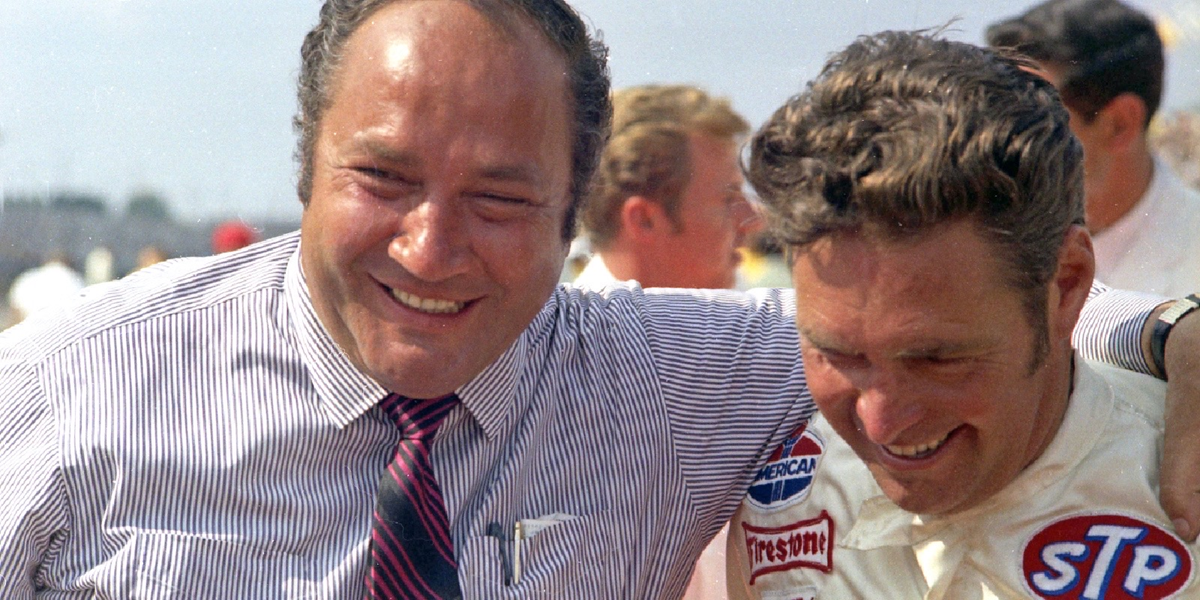
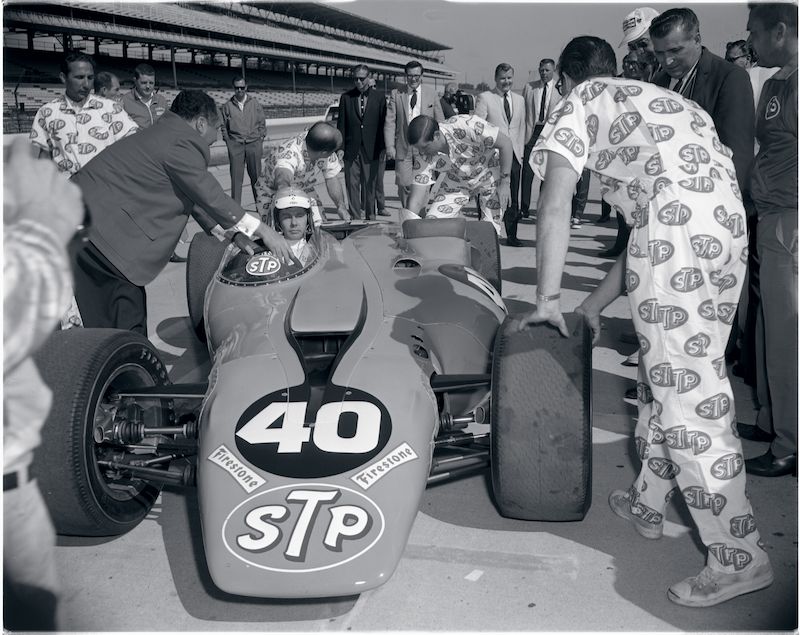
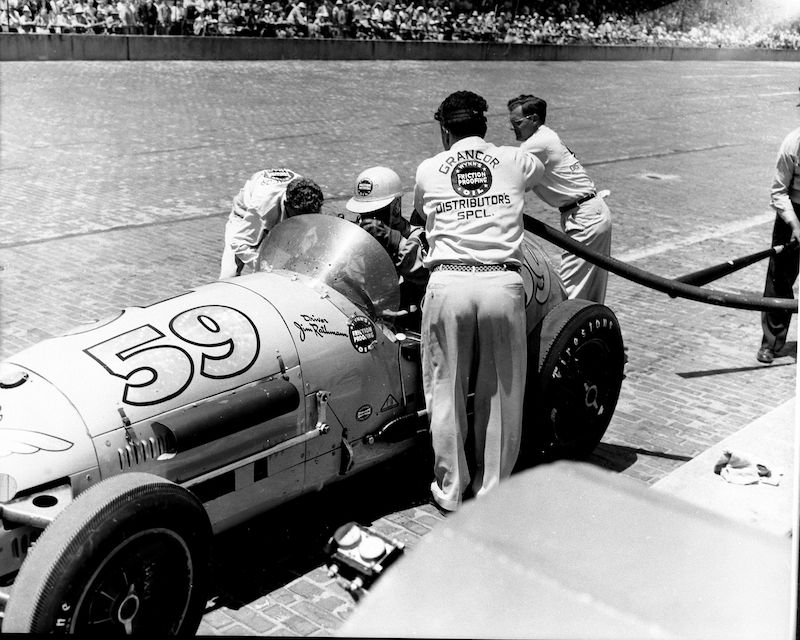
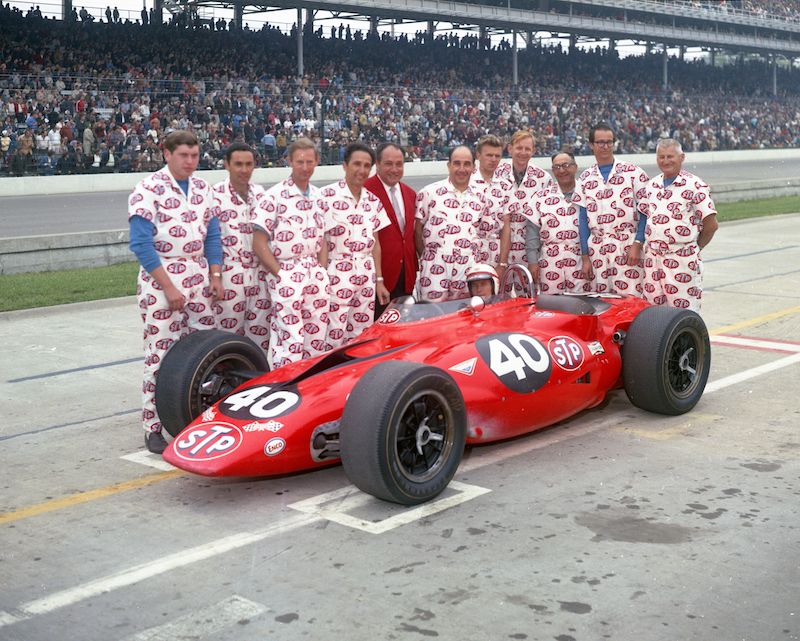
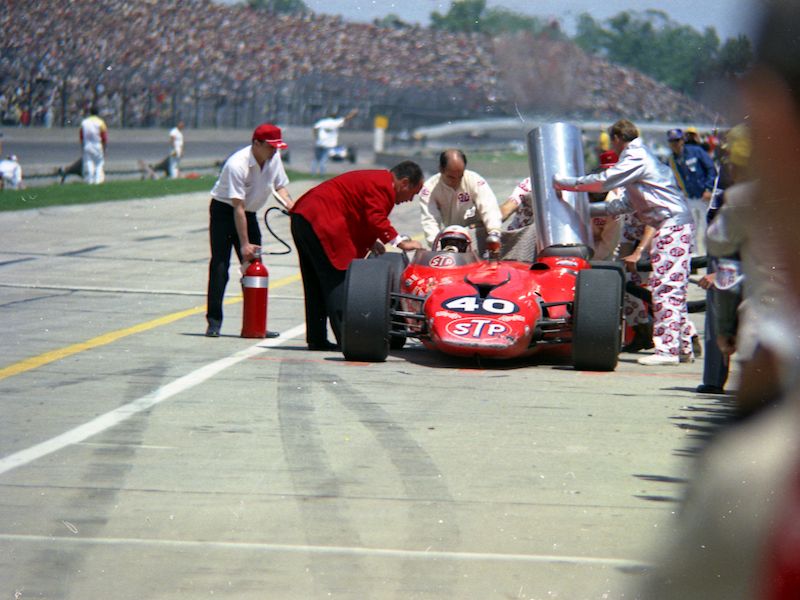
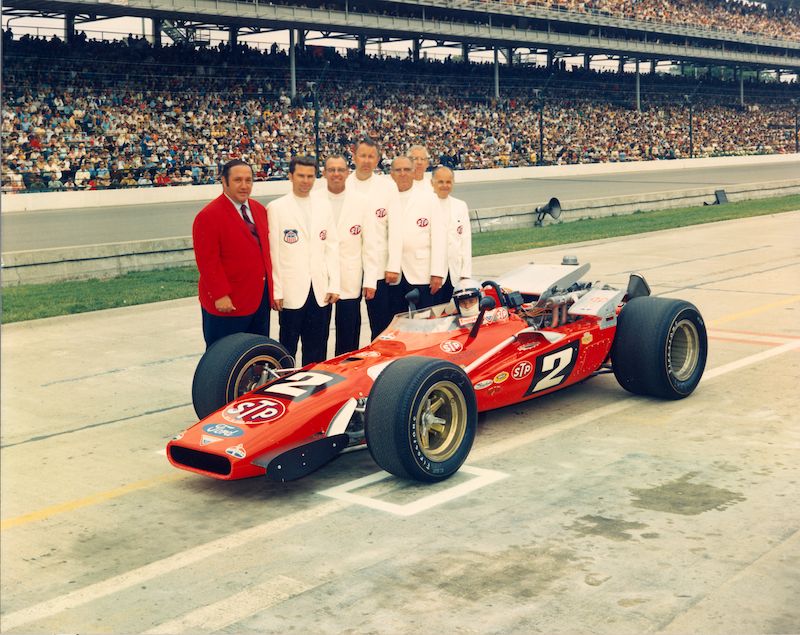
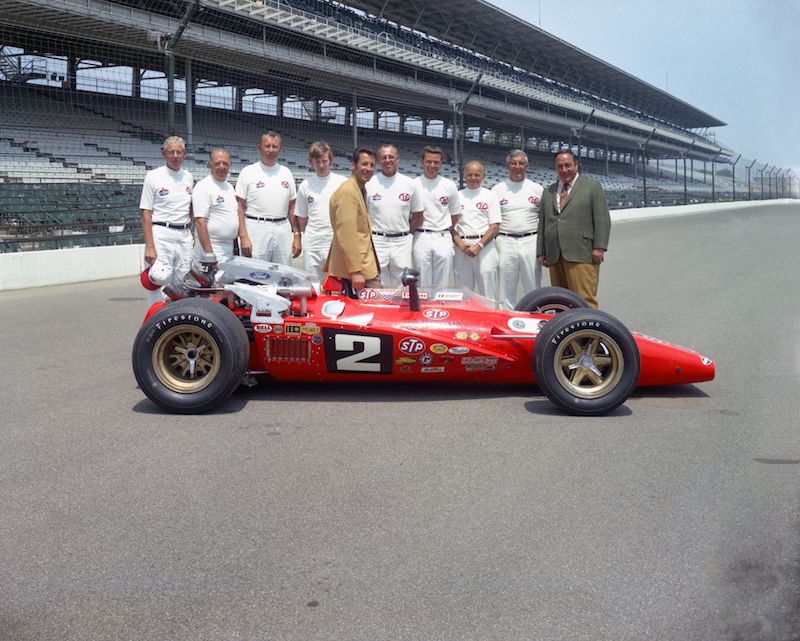
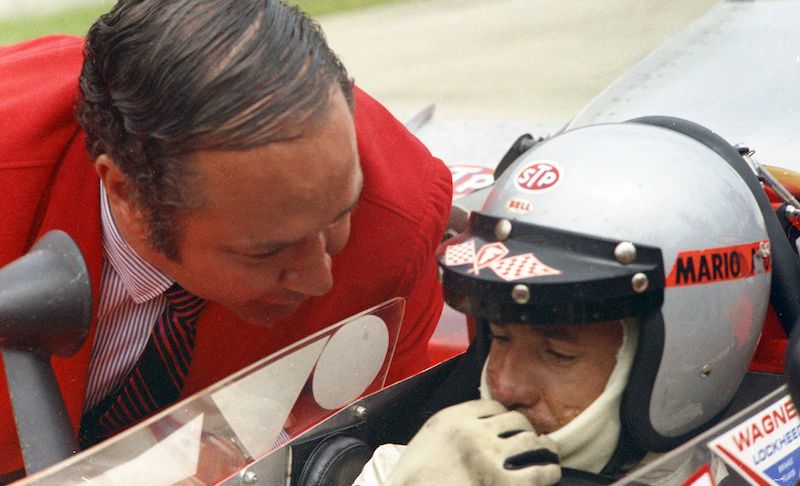
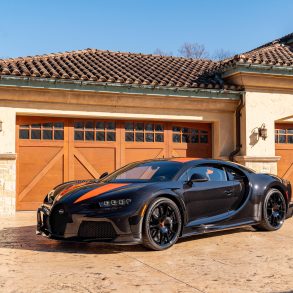
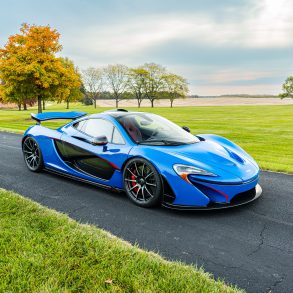
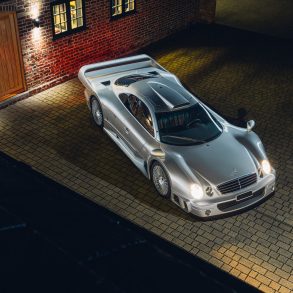
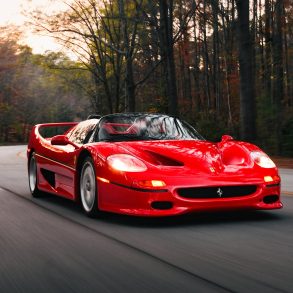
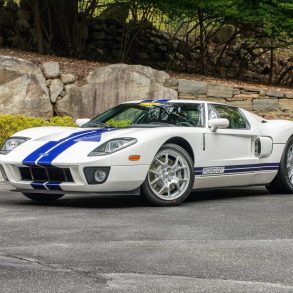
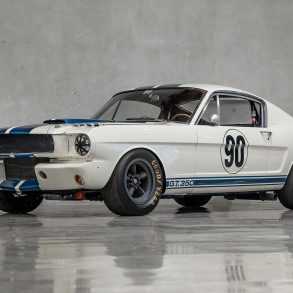

My generation grew up with STP commercials with Andy. Great memories of screwdrivers too slick to hold onto.
I met Andy as a college student through my then boss, Bill Maloney, host of the Chicago based “Motorsports International” TV show. When I was in the U.S. Army I got Andy to “sponsor” my Chattahoochee (GA) river “race” canoe in a 20 mile canoe race…..STP stickers were all over my winning entry. I visited Andy in his Woodland Hills offices when I moved to California, where he told me how he came to take over his then latest enterprise,Tune-Up Masters. Andy told me he approached the Tune-Up Masters owner and said….”I will work for you and Tune-Up Masters as spokesman and marketing honcho for free…..if I double your business in that one year, you will make me your partner and co-owner….if I don’t you will owe me nothing”. The rest, as they say, is history….Andy went on to not only double their business, he made many more millions for himself as owner. He was truly one of a kind! RIP
In 1966, our “fire suits” were ridiculous – just cotton coveralls dipped in 20 Mule Team borax and boric acid solution. They were good for 4 or 5 seconds in a gasoline fire. Andy and J. B. Hinchman, that year, gave Nomex suits from STP to every Indy 500 driver. I drove sports cars, but I became an instant believer. I bought a Hinchman suit and a big face scarf, and used them religiously. My “USAC” suit even had clod-shield pockets on the chest, for dirt track racing. There weren’t any Nomex sox or gloves or balaclavas yet, but they came along eventually. I was one of the first sports car guys with a Nomex outfit, and I did demo’s in the pits with a Zippo lighter. It was a big hit and, although I never had to be saved by that suit, plenty of guys did, and I’ll always be beholden to Andy Granatelli and Hinchman and their foresight. Larry
This is a terrific article. I have been a life-long fan of Andy and remember the turbine days well. I can tell you there are a lot more people today waxing nostalgic about those great machines than there were in the stands on pole and race days in ’67 and ’68. Back then it was pretty divided and, I think, there were more people against them (no engine sounds, “cheaters,” airplanes, too costly, etc.) than for them. But I LOVED those things! And no one can argue that they did not create a buzz – like almost everything Andy did. The kids loved those decals, sticking them everywhere! I am sure it drove the IMS facilities people nuts having to peel them off walls, trash cans, seats but they went on car bumpers and kids’ bikes, school notebooks, everything as well. What great promotion. It was such a simple tactic that was so brilliant I am surprised nobody does it today. I also learned from this piece, like Andy’s role with Wagner-Lockheed. I simply did not know and I’m pretty familiar with Andy’s career and racing in general. My only complaint, and it appears you guys got this article from the Speedway, is that if IMS is quoted on the passing of heroes it should ALWAYS come from Hall of Famer Historian Donald Davidson. This new president of theirs seems to use any excuse to get his name in print or his face on videos and it is a bit disgusting when it comes in association with someone’s passing. The Speedway should make comment on these somber moments but this person’s desire to position himself as some kind of industry personality – which he isn’t – is pretty transparent and very disappointing. Keep up the great work, I love your articles and photography!
When I think of GREAT AMERICANS … I think “Washington” “Patton” “Adams” “Lee” “Jackson”
and ” Mr 500 ” Andy Granatelli .. Some people think PT Barnum was the greatest showman, Ha ..! Ole’ Andy made every kid on the block rolling advertisements … Maybe we were different here in Louisiana, we plastered anything and everything with STP stickers….
Pick up a copy of the book “They call me Mr 500” it is a page turning fantastic read.
I would also like to point out the fact that Granatelli donated tens of millions of dollars to charities over the years.
And STP worked in extremis! Although I’ve known the occasional fastidious mechanic who’d say :STP will NEVER touch any of my engines,” it, in a crankcase full of Phillips Trop-Artic multigrade, left the bearings and rings of my BMC-powered Lotus 7A in perfect condition after over 15 miles of racing with no water in the radiator and 17 pounds of oil pressure. I don’t think the motor oil would’ve done that alone.
I well remember being in the Lotus garage at Indy, in 1965, & hearing the wail of the V8 Novi as came down the front straight! Andy was a perfectionist with his engines, he would fit a new engine & send his driver out for 4 laps (10 Miles), he would then remove all spark plugs & peer down at the piston crowns, if the tops of all pistons were not dry (rings fully bedded) he would wheel the car back to the garage & re-hone the bores & fit new rings!
are you the jim smith who hung around with toly arutunoff and bill and donna pryor at the ‘ring in ’63? if so, please get in touch! toly
Sorry but no! I was a Team Lotus mechanic from Aug ’64 til Aug. ’65! After 1 F1 race, at Solitude, I moved to the Indy team & looked after 38/1 for Jimmy.
Jim, awesome history. I’d love to hear the stories. I grew up in the Chicago area idolizing Clark. All my friends were into baseball, and I folllowed F-1 through Road & Track, and occasionally Wide World of Sports on TV. I was a lonely fan.
I grew up in Des Plaines, IL, about 15 minutes from the STP offices on Oakton Street When I was 11 (1967) I wrote to them to ask for STP decals for my bike. I never heard from them, so my mother drove me down to ask for one. Mr. Granatelli wasn’t there that day, but the receptionist was very nice and said she would be sure to tell him I’d stopped by. I got my stickers, and my Dad’s 1967 Ford Galaxie had a bumper sticker when leaving the parking lot. .
I worked for Tuneup Masters in Santa Monica as a trainee then moved up to Manager of a shop by 405/LAX
I met Andy at a breakfast on the Queen Mary in Long Beach,he was already at the table I sat down at I did not see him as I said hello to the other working guys. Andy then spoke to me saying how proud he was to see one of his men join a table and show good manners and humour to the guys already there. I was amazed and said back to him ” how unusual for a guy like me to sit down at a table with a man as high a profile as him” I was proud he was my boss and could see how he had succeeded with his business expertise but still maintaining the interest in everybody around him.
Great businessman and humble guy who deserved all the success he had.
RIP Mr Granatelli you made a difference in my life.
My twin brother Bill Castle, went to work for Tuneup Masters back in 1985, fresh out of trade school. Those 5 or so years, cemented the work ethic and love for the automotive industry he carried all his life. I have a picture of him and Andy back in those early days. Along with a TM t-shirt, Satin jack and his District Manager coveralls. I am sporting a TM tie and tie tack today as well. When he passed away a year and a half ago, I found a stack of TM decals and pledge decals and patches in his tool box. Andy and TM was a huge part of his life. Hopefully they are looking down on us all and sharing a few laughs.